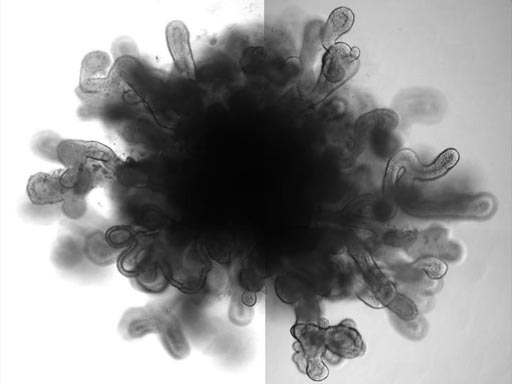Novel Model Systems Assist Lung Disease Studies
By LabMedica International staff writers
Posted on 25 May 2017
Lung organoids generated from human pluripotent stem cells were shown to recapitulate lung development and were posited as potentially useful tools to model lung disease.Posted on 25 May 2017
Investigators at Columbia University Medical Center generated lung bud organoids (LBOs) from human pluripotent stem cells (hPSCs). These organoid structures were grown in a Matrigel three-dimensional (3D) culture system and developed into branching airway and early alveolar structures that contained mesoderm and pulmonary endoderm tissues.

Image: Brightfield images of day 50 LBO-derived Matrigel colonies from RUES2 cells (Photo courtesy of the Snoeck Laboratory at Columbia University Medical Center).
The investigators reported in the April 24, 2017, online edition of the journal Nature Cell Biology that they had used LBOs as model systems to study disease situations such as infection by respiratory syncytial virus (RSV) and mutation in the gene encoding HPS1 (Hermansky-Pudlak syndrome 1 protein), which causes an early-onset form of intractable pulmonary fibrosis.
Infection in vitro with RSV, which causes small airway obstruction and bronchiolitis in infants, led to swelling, detachment, and shedding of infected cells into the organoid lumens, similar to what has been observed in human lungs. Introduction of mutation in HPS1 led to accumulation of extracellular matrix and mesenchymal cells, suggesting the potential use of this model to recapitulate fibrotic lung disease in vitro.
"Researchers have taken up the challenge of creating organoids to help us understand and treat a variety of diseases," said senior author Dr. Hans-Willem Snoeck, professor of microbiology and immunology at Columbia University Medical Center. "But we have been tested by our limited ability to create organoids that can replicate key features of human disease. Organoids, created with human pluripotent or genome-edited embryonic stem cells, may be the best, and perhaps only, way to gain insight into the pathogenesis of these diseases."













